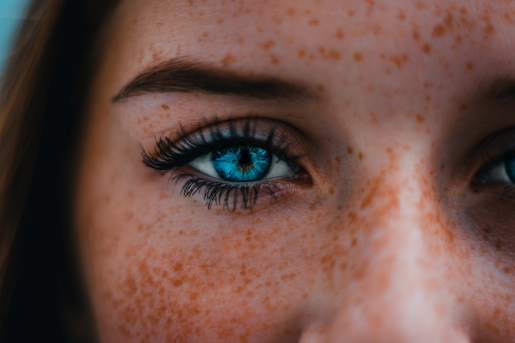Are eyelash extensions safe?
If you’re looking for ways to enhance and simplify your makeup routine, eyelash extensions may sound like an enticing option. Extensions can add volume and length to your eyelashes, but are they safe for your eyes?
Dr. Masih Ahmed, an ophthalmologist with Baylor Eye Care, and Dr. Rohini Sigireddi, resident with the Department of Ophthalmology at Baylor College of Medicine, share what you should know when considering eyelash extensions in the following Q&A.
Q: Why are eyelash extensions popular?
A: Eyelash extensions have grown in popularity due to beauty trends favoring the appearance of more robust eyelashes and eyebrows. Just as we see more people seeking microblading, microshading, and the use of brow gel to enhance their natural eyebrows, so too are they looking to boost their natural eyelashes.

Additionally, eyelash extensions offer a convenient, mess-free, semi-permanent alternative to daily mascara wear, and allow customers to shave minutes off their morning routine.
Q: Are there any eye health risks associated with eyelash extensions?
A: Unfortunately, there has been a wide range of risks reported with eyelash extension use. Nylon lash extensions have embedded in the conjunctiva and subconjunctival space causing significant eye redness and pain, requiring removal in the operating room. The pressure placed on the eye from eyelash tape and the rubbing required in eyelash removal have been reported to cause conjunctival damage and subconjunctival hemorrhage.
Contact dermatitis, keratoconjunctivis, and allergic blepharitis have also been reported from the use of various types of eyelash glue, eyelash tape, and eyelash remover. Serious vision-threatening conditions such as hemophilus influenza keratitis, a bacterial infection of the cornea, have been reported after eyelash glue abraded the cornea. Lastly, eyelash remover solvent may cause corneal complications, specifically in patients with prior LASIK refractive surgery.
Q: Is it safer to use false eyelashes vs. lash extensions?
A: This is a difficult question to answer, as strips of false lashes may be applied directly to the base of the natural lashes or individually on the natural lashes themselves. We would hypothesize that the safety of either procedure is more dependent on the method of adherence of lashes and components of the adhesive glue, tape and remover used.
An alternative for those who are seeking a more regulated, pharmacologic option to boost eyelash volume is bimatopost (or Latisse), a prostaglandin analog therapy that was approved by the U.S. Food and Drug Administration as a daily application for the treatment of hypotrichosis, or the absence of eyelash growth. Patients have shown 2 mm of eyelash growth on this therapy.
Q: Does the material used for extensions make a difference?
A: Yes. While lashes are often made from materials such as nylon, they are often enhanced with additional chemicals such as formaldehyde, proplylene glycol, squallane, and tocopheryl, which can contribute to causing the conditions listed above. Additionally, eyelash glue and tape are often the culprits of additional risk to eye health. A common adhesive used in eyelash application is cyanoacrylate glue, or superglue, which is known to cause a wide range of ocular issues, including contact dermatitis, conjunctival and corneal abrasion, keratoconjunctivitis and punctate keratopathy as well as systemic reactions such as asthma and allergic rhinitis.
Q: Is there a risk to the natural eyelashes when getting extensions?
A: While there is limited available medical literature on this topic, individuals have reported that the weight of false lashes on their natural lashes may cause breakage and that the presence of false lashes may lead to more eye rubbing or eyelash manipulation and therefore eyelash loss.
Q: Is there anyone who should avoid eyelash extensions?
A: Individuals with known skin hypersensitivity reactions, including contact dermatitis and allergic blepharitis, as well as patients with known eyelid, meibomian gland, dry eye, tear film, or other anterior segment disease, should avoid eyelash extensions.
Q: Are there signs of infection or irritation?
A: Signs of infection include eyelid redness, eyelid swelling, decreased vision, eye redness, eye pain, tearing, discharge, sensitivity to light, or other changes in appearance to the eyelids or eye itself.
Q: Is there anything else you would like to share for those who may be interested in eyelash extensions?
A: Be sure to do your research regarding the eyelash extension material and adhesive method, review any medical or ocular conditions that may predispose you to adverse reactions, and consider prior customer experiences. It’s always recommended to obtain any cosmetic procedure, especially around the eyes, from a trusted source – such as a fully licensed cosmetologist.
Additional Resources
Learn more about Baylor Eye Care or call 713-798-6100 to request an appointment.
-By Nicole Blanton



